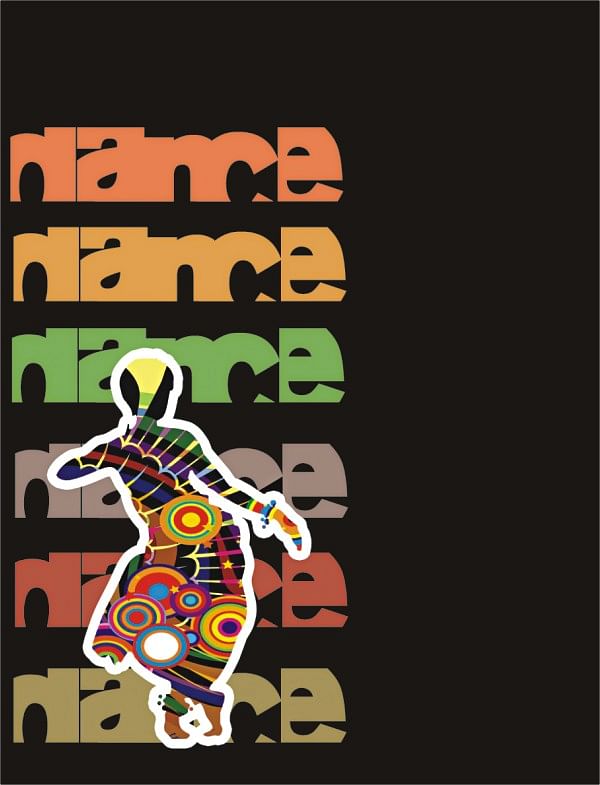
Is classical dance obsolete?
Story: Safieh Kabir . Cover art: E R Ronny
Around here, it dates back to the first drains, when the Indus civilisation came and went along the river banks and left behind the curving brass of dancer figurines. Thousands of years have passed. Newer dances, in all their jiving, floor-breaking, pop-locking glory, have taken centre-stage. But should classical dance be allowed to flow away with time as the debris of development, irrelevant now that newer forms have arrived?
As the majority of Bangladeshi classical dancers are girls, we asked around amongst teenagers of the opposite sex. “Boring”, said an overwhelming majority. When asked why, however, they found that question less easy to answer. The whole scene was reminiscent of this writer's attitude to compulsory dance classes at school when she was younger. Almost every girl in class hated them with a raging passion, but looking back, few of us would be able to explain what was so excruciating about the experience. What is it that makes our youth so perversely opposed to classical dance? Two dancers, one older and immensely experienced and the other young and passionate, offered us their opinions on the subject.
We caught the famed kathak dancer, Munmun Ahmed, for a few minutes just after a show, with crimson lips, clinking bangles and sweat still beading her forehead. Surrounded by people congratulating her for her own and her team's performances, we fit in a brief interview before she had to move on. She believes that classical dance is unpopular because promoters of dance promote with their business interests in mind. They are less concerned with quality than with the likes and dislikes of the public. It is her opinion that the youth will appreciate quality when they see it, but if, on the basis of their current opinions, they are deprived of the opportunity to see good classical dance, their opinions cannot be changed. They will continue to view the form as an obscure, uninteresting thing.
But according to Naziba Basher, a classical-based modern dancer, it is up to the dancers to get their audiences interested. She says that young dancers, who automatically lend beauty and energy to a piece, are not provided with adequate exposure and experience. Often, their teachers, trained abroad themselves, prefer to hold on to the limelight by constraining the students within national boundaries. As a result, many of the younger, potentially more fascinating dancers lack the standard of quality required to sway the crowd.
Additionally, Naziba believes that classical dance has lost its passion. A dance without emotion is a book without meaning. Words put together with perfect sentence structure will not draw a reader if they have nothing interesting to say. Similarly, when a dancer performs a piece with grace and precision, but cannot communicate the feelings behind the dance, or worse still, does not have any feelings to communicate, her audience is left unmoved. One complaint we heard about classical dance referred to its lack of authenticity. The pre-designed moves and the planned expressions leave little space for creative expression and real passion, was the girl's opinion. Naziba says that you must reach out to your audience in order to interest them, and to do this, you have dance from the heart, and give the moves authenticity by making them your own.
Both dancers agreed on the idea that classical dance is more difficult than modern dance. Munmun Ahmed explained to us the multiple-beat cycles within a performance. A dancer is allowed a fraction of a second for a movement, and every movement, including footwork and facial expressions, must adhere to the beats with incredible grace. Naziba Basher spoke of classical dance as the mother of all dances.
“Classical dance is where it starts,” she said. Someone who has been through the rigorous training of classical dance is able to pull off other forms with ease, but the same is unlikely to be true the other way around.
One guy we asked described classical dance as “pretty girls doing pretty dances to bad songs”. That's where fusion and contemporary dance comes in. Maybe it's not necessary to be purist. Perhaps the brilliance of classical moves set to the more stimulating beat of modern music is a positive development rather than a compromise.
But we think classical dance shouldn't be abandoned because it's pretty sexy. There's something hugely sensual in the bodies, slick with sweat, vibrating in time to the chime of their anklets. Their expressions of perfect bliss upon the execution of a move, however fake, are extremely convincing. Give it a try. You may be surprised.
